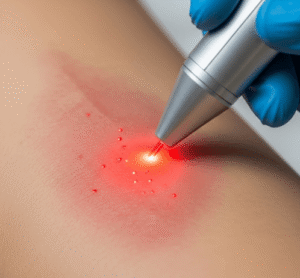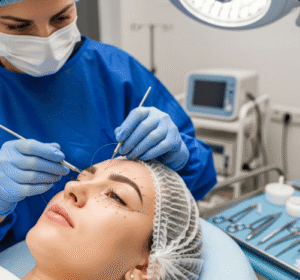Overview
Pink disease, also known as acrodynia, is a rare condition most commonly seen in infants and young children, historically caused by chronic mercury poisoning. The term “acrodynia” means “pain in the extremities,” reflecting the painful pink discoloration of the hands and feet that characterizes the condition. Although once relatively common due to the widespread use of mercury-containing products, pink disease has become extremely rare today because of increased regulation and awareness of mercury toxicity.
What is Pink Disease (Acrodynia)?
Pink disease is a systemic toxic reaction to mercury exposure, especially elemental or inorganic mercury, affecting the skin, nervous system, and other organs. The hallmark signs include painful, pink-colored extremities, behavioral changes, and autonomic nervous system dysfunction. The condition typically affects children under 5 years old, although rare adult cases have been reported, particularly among those exposed to mercury through occupational or alternative medicinal sources.
Symptoms
Symptoms of acrodynia often develop gradually and may be confused with other pediatric illnesses. Key signs and symptoms include:
- Pink discoloration of the hands and feet
- Pain, swelling, and peeling of the skin in extremities
- Irritability or mood swings (“mad baby disease”)
- Photophobia (sensitivity to light)
- Profuse sweating
- Insomnia and fatigue
- Excessive salivation
- Itching or burning sensation in the skin
- Muscle weakness and tremors
- High blood pressure and fast heart rate
- Hair loss and weight loss
- Low-grade fever
If left untreated, acrodynia can lead to severe neurological damage and long-term developmental issues.
Causes
The primary cause of pink disease is chronic exposure to mercury, which was previously found in:
- Teething powders and infant soothing lotions (now banned)
- Mercuric chloride-based antiseptics
- Mercury-containing thermometers, batteries, and fungicides
- Contaminated fish and seafood (inorganic mercury exposure)
- Some alternative or folk remedies
- Occupational exposure in adults (mining, dentistry, or laboratory work)
Mercury disrupts enzyme activity and nerve function, leading to widespread systemic symptoms.
Risk Factors
Factors that increase the risk of developing pink disease include:
- Infancy or early childhood (especially under 5 years old)
- Use of mercury-containing products (past or present)
- Poor renal function, reducing the ability to excrete mercury
- Genetic susceptibility to heavy metal sensitivity
- Malnutrition (which may impair detoxification)
- Exposure to environmental mercury through household items, industrial contamination, or cultural practices
Complications
If not recognized and treated promptly, acrodynia can lead to:
- Long-term neurological damage
- Behavioral and cognitive impairments
- Kidney dysfunction or failure
- Persistent hypertension
- Peripheral neuropathy
- Growth delay in children
- Death in severe or untreated cases (historically before the condition was understood)
Prevention
Today, pink disease is considered largely preventable due to increased awareness and regulation. Preventive strategies include:
- Avoiding use of any mercury-containing medications or products
- Choosing fish and seafood with low mercury content
- Proper disposal and handling of mercury-based items (e.g., thermometers, batteries)
- Educating parents about the risks of folk remedies or unregulated supplements
- Occupational safety practices in industries involving mercury
- Regular monitoring in high-risk environments
- Public health policies banning mercury-based compounds in pediatric products
Treatment Options in Korea
Though extremely rare in modern times, cases of mercury poisoning or suspected pink disease can still be diagnosed and managed with advanced medical care in South Korea. Treatment typically involves:
- Immediate discontinuation of mercury exposure
- Chelation therapy: Medications such as dimercaprol (BAL) or DMSA are used to bind mercury and remove it from the body
- Supportive care: Including IV fluids, electrolyte balance, and nutritional support
- Blood and urine mercury testing: Available at major hospitals for diagnostic confirmation
- Neurological evaluation and rehabilitation: For patients with lingering motor or cognitive deficits
- Dermatology and wound care: To manage skin peeling, blistering, or secondary infections
- Pediatric specialists: Experienced in identifying and treating rare toxicologic conditions
- Public health monitoring: For cases related to environmental or industrial exposure
Hospitals such as Seoul National University Hospital, Samsung Medical Center, and Asan Medical Center have the capacity for toxicology evaluation, advanced diagnostics, and international patient support. South Korea’s combination of modern medicine and government-regulated product safety ensures that pink disease remains exceedingly rare and treatable when identified early.













